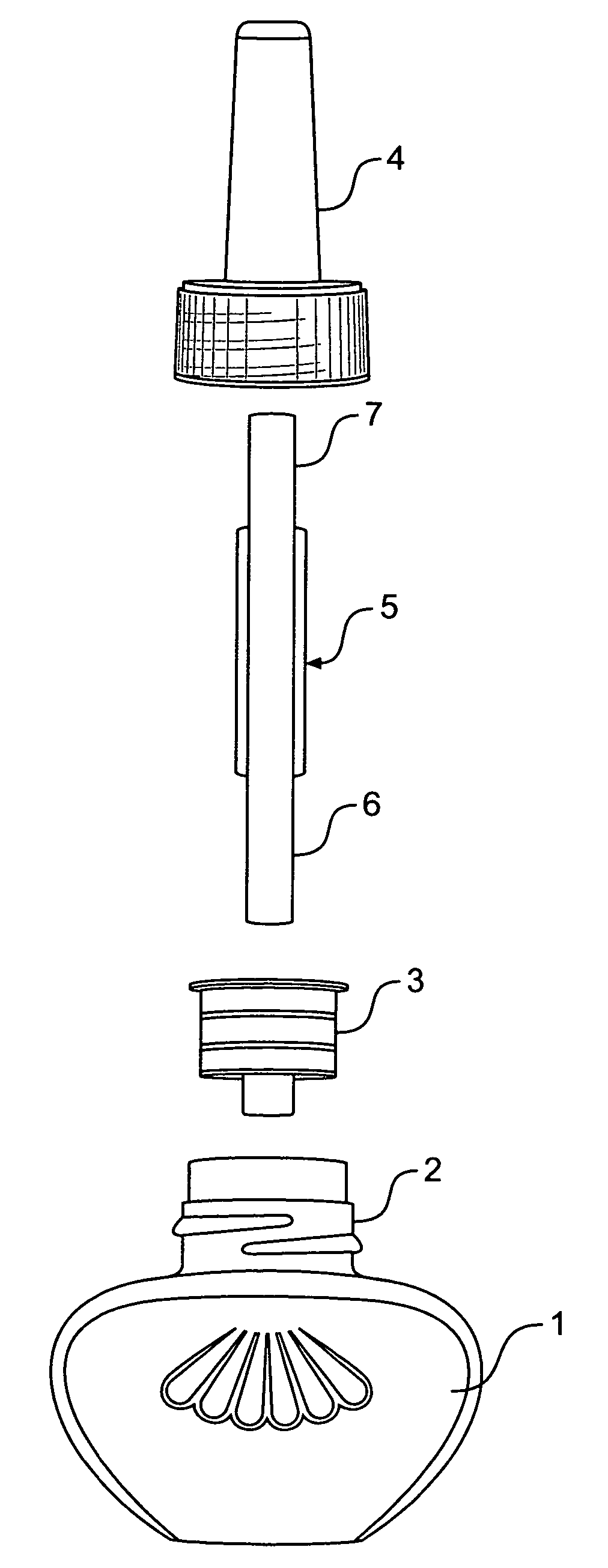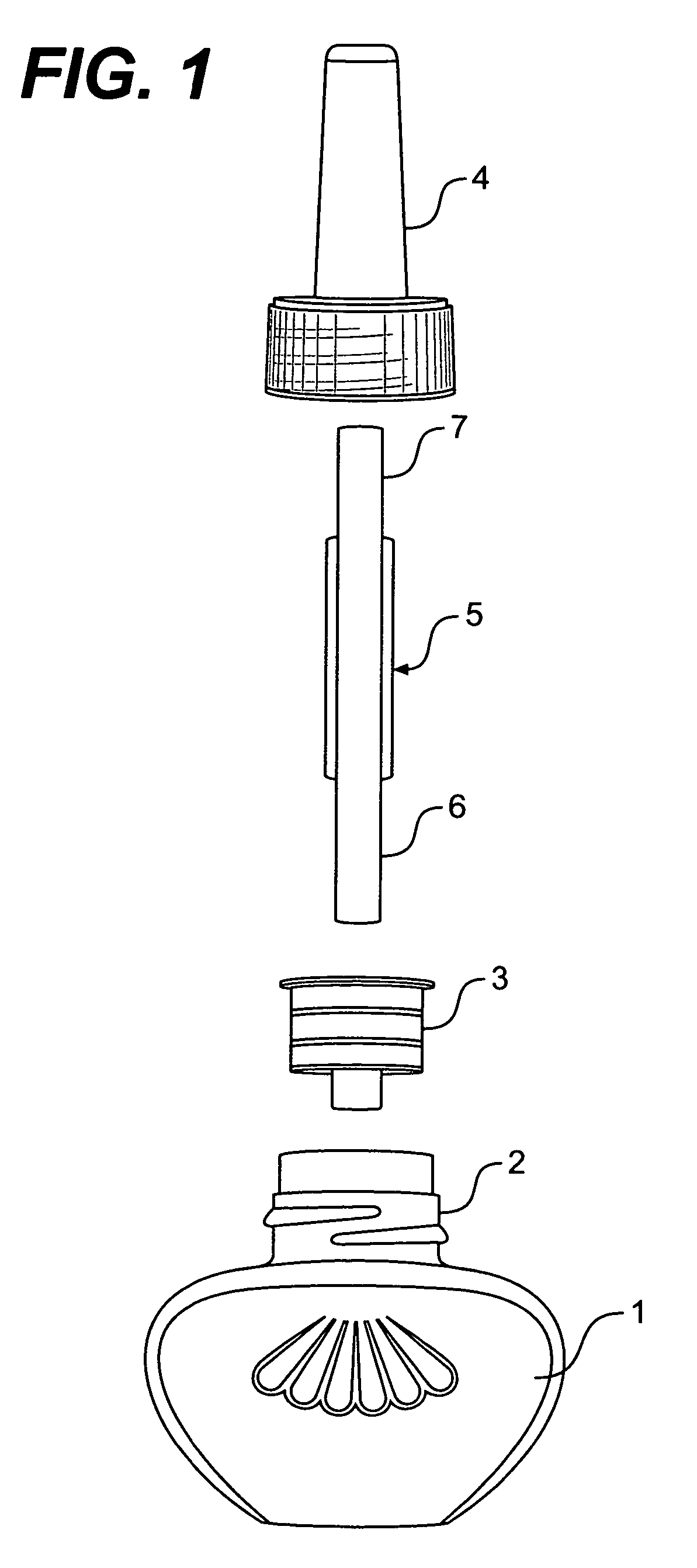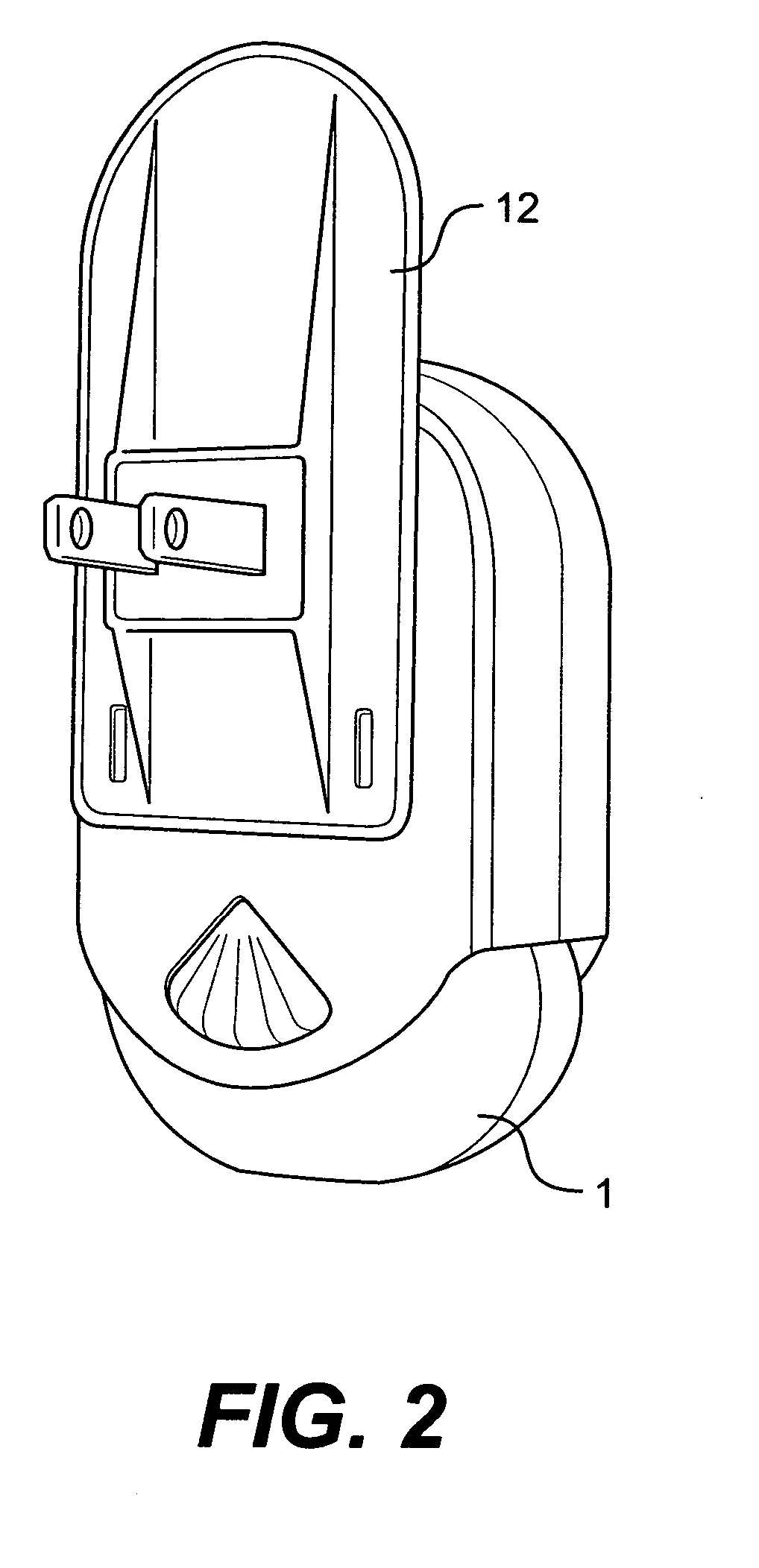Methods for reducing seepage from wick-based controlled release devices, and wick-based devices having reduced seepage
a technology of controlled release device and wick-based device, which is applied in the direction of lighting and heating apparatus, combustion types, applications, etc., can solve the problems of unwanted seepage (leakage) of liquid, undesirable addition of surfactant, and unwanted seepage of liquid, so as to reduce the release rate of liquid
- Summary
- Abstract
- Description
- Claims
- Application Information
AI Technical Summary
Benefits of technology
Problems solved by technology
Method used
Image
Examples
example 1
First Seepage Test
[0102] Ethyl cellulose was tested as a possible candidate for increasing liquid viscosity in wick-based controlled release devices. The following mixtures of thickener agent and liquid were filled into Glade® Plug-In Scented Oil (PISO) bottles with vent holes and wicks with an exposed wick length of 0.25 inches (0.635 cm): [0103] 1) 0.5 wt % ethyl cellulose+pure fragrance [0104] 2) 1 wt % ethyl cellulose+pure fragrance [0105] 3) 1.5 wt % ethyl cellulose+pure fragrance
[0106] Additional PISO bottles were also filled with pure fragrance, as a control.
[0107] Each filled bottle was weighed for initial mass and then rested on its side with the wick touching a corrugated surface. After twenty-four hours, each filled bottle was weighed again to find its final mass, and the amount of seepage (in grams / day) from each filled bottle was determined from the difference between its initial and final mass. Table 1 shows the seepage test results for pure fragrance, and mixtures ...
example 2
Evaporation Test
[0109] This test confirmed that increasing the total exposed area of the wick can compensate for a reduction in evaporation due to an increase in viscosity.
[0110] Two sets of PISO bottles with vent holes were prepared: one set in which the wick of each bottle had a 0.25 inch (0.635 cm) exposed wick length, and one set in which the wick of each bottle had a 0.8 inch (2.032 cm) exposed wick length.
[0111] The following mixtures of ethyl cellulose and pure fragrance were filled into the two sets of bottles: [0112] 1) 0.5 wt % ethyl cellulose+pure fragrance [0113] 2) 1 wt % ethyl cellulose+pure fragrance [0114] 3) 1.5 wt % ethyl cellulose+pure fragrance.
[0115] Additional bottles in both sets were also filled with pure fragrance, as a control.
[0116] Each filled bottle was weighed for initial mass and then was weighed again at the end of each of several consecutive twenty-four-hour intervals, in order to determine how much fragrance had evaporated each day from each bo...
example 3
Second Seepage Test
[0121] As discussed in section II, increasing the total surface area of the wick exposed to ambient air also increases the amount of seepage. This test demonstrates this result.
[0122] The following mixtures of ethyl cellulose and pure fragrance were filled into PISO bottles with vent holes and wicks with an exposed wick length of 0.8 inches (2.032 cm): [0123] 1) 0.5 wt % ethyl cellulose+pure fragrance [0124] 2) 1 wt % ethyl cellulose+pure fragrance [0125] 3) 1.5 wt % ethyl cellulose+pure fragrance.
[0126] Additional bottles were also filled with pure fragrance, as a control.
[0127] Each filled bottle was weighed for initial mass and then rested on its side with the wick touching a corrugated surface. After twenty-four hours, each filled bottle was weighed again to find its final mass, and the amount of seepage (in grams / day) from each filled bottle was determined from the difference between its initial and final mass. Table 4 shows seepage test results from Exam...
PUM
 Login to View More
Login to View More Abstract
Description
Claims
Application Information
 Login to View More
Login to View More - R&D
- Intellectual Property
- Life Sciences
- Materials
- Tech Scout
- Unparalleled Data Quality
- Higher Quality Content
- 60% Fewer Hallucinations
Browse by: Latest US Patents, China's latest patents, Technical Efficacy Thesaurus, Application Domain, Technology Topic, Popular Technical Reports.
© 2025 PatSnap. All rights reserved.Legal|Privacy policy|Modern Slavery Act Transparency Statement|Sitemap|About US| Contact US: help@patsnap.com



